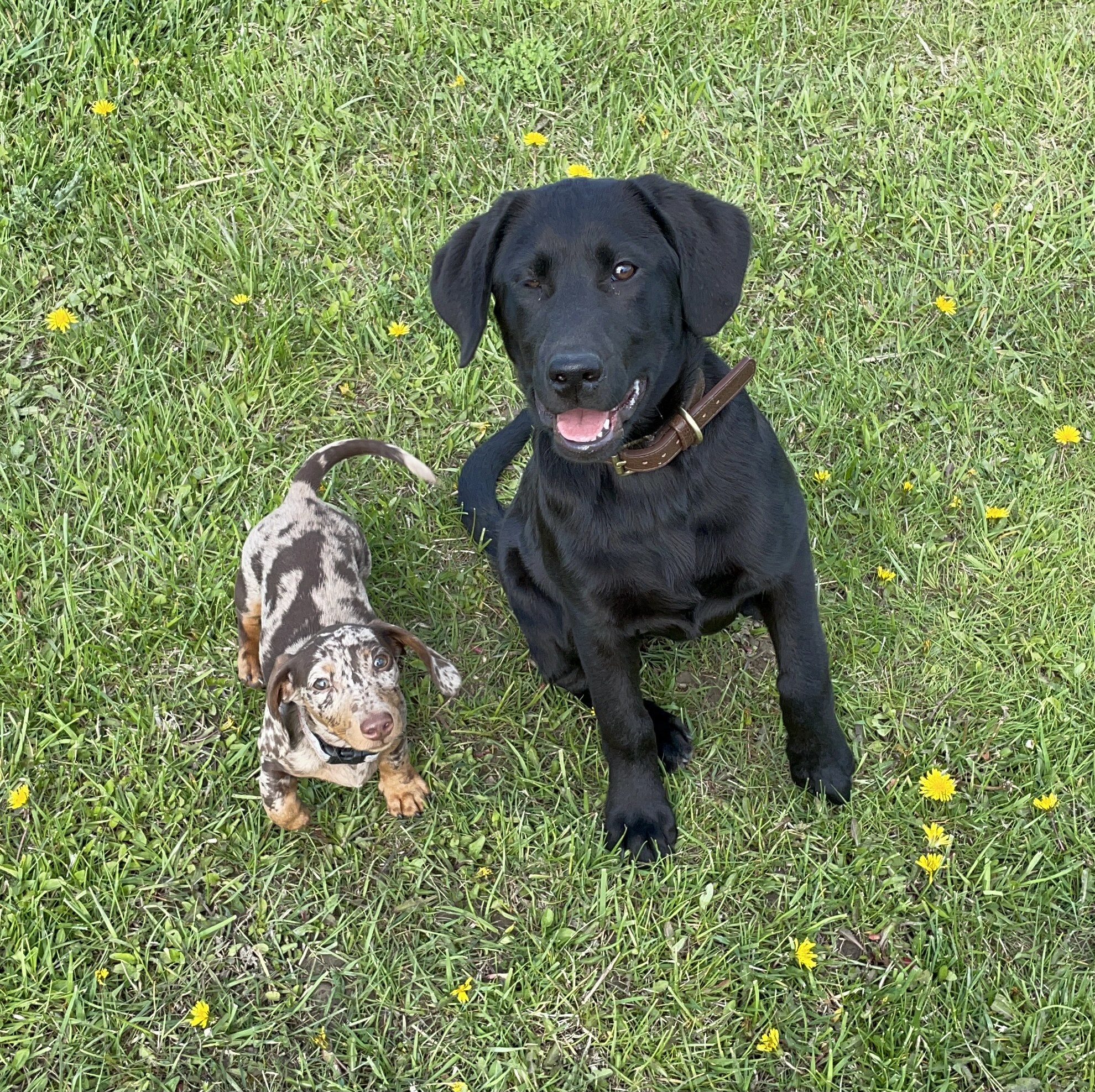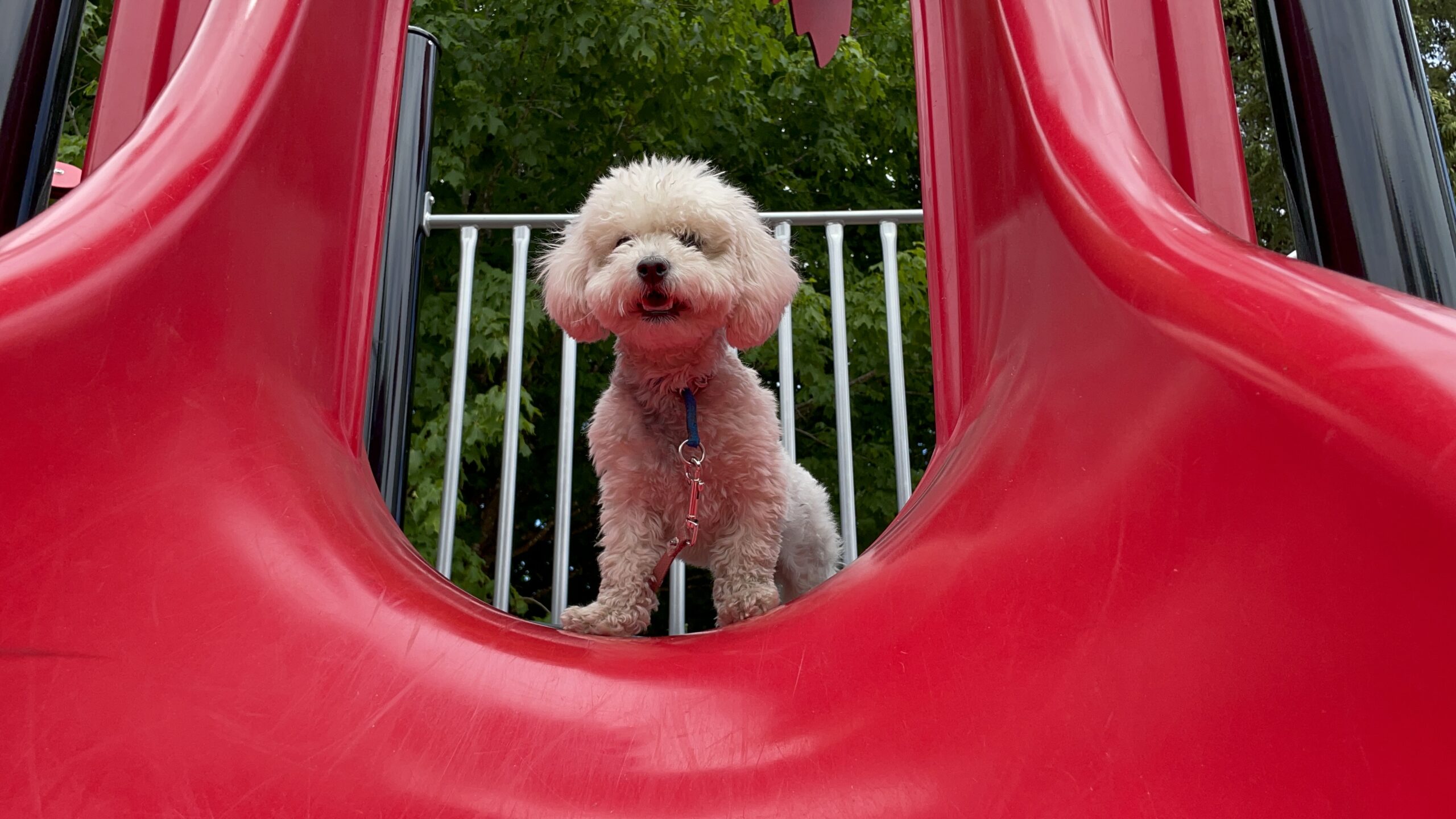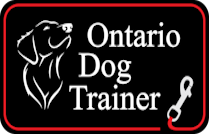
Puppy Pals
You got a new puppy!!
It’s Puppy-Palooza time at our training school! Puppies can be fun and frustrating. Consider getting help BEFORE your puppy arrives and definitely before it starts driving you crazy! You want everything to be just right when your newest family member comes home.
Keep Your Puppy Safe
Your veterinarian may advise you to keep your puppy at home for the first six months to one year of life to avoid health risks. This is good advice only for the first few days while you and your puppy get settled in. After that, prepare your puppy for everyday life by providing new experiences in the real world. Real-world adventures include two to three short walks (i.e., 10 minutes maximum) around your yard and neighbourhood. Exploring new sights smells and sounds is essential to creating a confident pup.
Visit safe places like friends’ homes, and stores where dogs are allowed but not common. For your pup’s health and safety, it is best to avoid pet supply stores and places frequented by unknown dogs.
One of the most common questions asked by puppy owners is how and when to introduce their puppy to other dogs and new people. DO NOT allow unknown dogs or people to approach your puppy – EVER. Touch should always be on the dog’s terms, and your puppy will let you know when she is ready to meet strangers. It is your job to ‘hear’ what she is ‘telling’ you by watching her body language. Your job is to set boundaries for people so that your puppy will feel safe in their presence.
Get the Right Start
Living by the philosophy that Training time is all the time will get you and your puppy started on the right paw. Training is how you live with your dog. It begins the moment that your puppy comes home and continues for life.
Seven to twelve weeks is the best age for your puppy to learn to cope with new things and to build your bond. If they have lacked enrichment and a variety of life experiences, their coping skills will be weak. They may be frightened of routine sights and sounds of daily life.
You want your puppy to be relaxed with strangers and when being handled and groomed. Scared dogs bite and live a very stressful life. Please do not let your puppy grow up to be a scared dog!
Start now by touching your puppy’s ears, and feet and looking in its eyes and mouth so that they accept being handled and groomed. Be quick and intentional with each session so that it’s over before your puppy gets fussy or nippy.
Consistency Matters – Have a Predictable Routine
Schedule a specific time each day to do the handling activities listed below, making sure that your pup is introduced to new experiences gradually, and that they get lots of praise and treats.
Do this routine daily for your pup’s first year and then a minimum of once per week for life:
-
- Gently clean inside his ears with ear cleaner and gauze, tissue or cotton balls.
- Brush his coat – Start with only one stroke, praise and end the session until the next day. Add one stroke per day until your puppy is happy to see the brush because it means quality time together with you. If he tries to chew the brush, pause, do one more stroke and end the session. Alternatively, keep his mouth busy with a stuffed chew toy while you brush him.
- Get him used to tooth-brushing, first by rubbing his gums with just your finger dipped in salt water (dogs like the taste). When he accepts that, use a finger toothbrush, and finally with a real toothbrush and doggie toothpaste.
- Get him used to having his eyes examined and mouth opened and examined by you, and pretend you are giving him a pill by touching the back of his tongue with your finger.
- Fiddle with his paws and nails, and then gradually introduce him to nail trims – at first clipping just one or two nails at a time. Make sure you know how to avoid cutting his nails too short – it will hurt him quite a bit if you cut the vein!
- Get him used to baths by putting him in the tub for treats: first with no water at all, then with a little puddle to play in. Eventually get him used to running water, being wet, and finally being shampooed and rinsed.
- Have lots of strangers pet and handle your puppy within the boundaries and limits set by you. Do not let people charge into his space. Make sure your puppy meets men and women of all ages, children, and people of various appearances and ethnicities.
- Ask people that you trust to stare at your puppy close up, give him tight cuddles, gently tug his tail, fiddle with his paws, play with his toes, grab him by the collar, lean over him and pick him up, and act goofy around him so he gets used to weird and whacky human behaviour. Keep the sessions short. Always make sure your pup is comfortable, and that he gets lots of praise and treats with each of these experiences.
- Expose your pup to whatever you want him to be comfortable with as an adult: car rides, busy sidewalks, noisy schoolyards, rowdy crowds, parties, other animals, sports games, traffic, elevator rides, stairwells, noisy appliances, etc. After your pup is settled in to your home, choose one new adventure a day to build your pup’s resume of life.
What is ‘Socialization’?
The meaningful definition of socialization for your puppy is the subject of a full article on its own. However, following the socialization checklist below will get you and your puppy off to a great start.
Keep this checklist posted where you can see it and remember to keep track of your puppy’s responses when exposed to other people, pets, places, and experiences. Teaching your puppy to cope with new experiences now will prepare them for any changes in lifestyle that may occur in future.
The best time to start exposing your pup to the adventures on this list is NOW! If your puppy is older than the “age in weeks” simply proceed with extra caution! If needed, seek help from a certified professional trainer to learn how to read your pup’s body language when he is faced with a new challenge.

Puppy At The Playground
Exposure Checklist for Socialization
Age in weeks
| Exposure to: | 8 | 9 | 10 | 11 | 12 | 13 | 14 | 15 | 16 |
| Babies, toddlers, children | |||||||||
| Teenagers, adults, elderly people | |||||||||
| People with wheelchairs, walkers, crutches | |||||||||
| In-line skaters, bikers, skateboarders | |||||||||
| Drunks, people with odd gaits | |||||||||
| People in uniform | |||||||||
| Service, Repair and delivery people | |||||||||
| People with umbrellas | |||||||||
| People in helmets, masks, baseball caps | |||||||||
| People with hats, beards, glasses | |||||||||
| People with parcels, capes, sacks | |||||||||
| People with strollers, wagons | |||||||||
| People of various ethnicities | |||||||||
| School grounds | |||||||||
| Crowds, clapping, cheering | |||||||||
| People yelling, loudspeakers | |||||||||
| People dancing, singing | |||||||||
| Livestock, waterfowl | |||||||||
| Other puppies, friendly adult dogs | |||||||||
| Other pets | |||||||||
| Traffic, busses, trains, motorcycles | |||||||||
| Boats, jet skis, skidoos | |||||||||
| Manhole covers, grates | |||||||||
| Shiny floors, tiles, icy streets | |||||||||
| Gravel, cement, mud | |||||||||
| Revolving signs, swinging bridges | |||||||||
| Walks after dark, in bad weather | |||||||||
| Hot air balloons, helicopters, airplanes | |||||||||
| Lawn mowers, snow blowers | |||||||||
| Elevators, automatic doors | |||||||||
| Balconies, stairs | |||||||||
| Drive-thrus, car washes, tunnels | |||||||||
| Electrical appliances, washers | |||||||||
| Vacuum cleaners, hair dryers | |||||||||
| Construction and machinery noises | |||||||||
| Wind, rain, thunder, snow | |||||||||
| Fireworks, sporting events, fairs |
Join Our Community!
For more fun puppy training tips, download my free guide to The Art of Successful Puppy Parenting
Welcome to Our Community!
I’m looking forward to seeing you join in the fun on our social media pages! Tap, follow and drop a comment saying hi!
For more great training tips, click here to check out other BLOG articles
Click here to join Your Dog Thinks Video Library – new video training tips straight to your Inbox each week
- Click here to follow us on TikTok for quick training tips that you can do every day!!
- Click here to Join our FACEBOOK community
- Click here to follow us on INSTAGRAM
- Click here to subscribe to our YouTube Channel for training tips and techniques. Be sure to ring the bell for the videos that you like!
